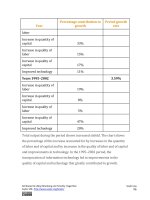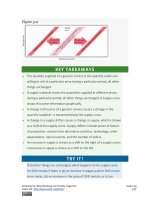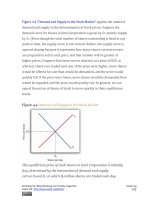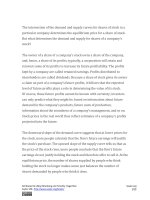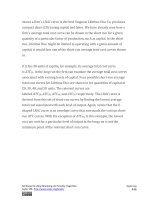Authors libby rittenberg 775
Bạn đang xem bản rút gọn của tài liệu. Xem và tải ngay bản đầy đủ của tài liệu tại đây (502.42 KB, 1 trang )
Sellers can also exercise power to set price. A factor can be sold by a
monopoly firm, which is likely to behave in a way that corresponds to the
monopoly model.
When there are a large number of sellers, they may band together in an
organization that seeks to exert a degree of market power on their behalf.
Workers (sellers of labor), for example, have organized unions to seek
better wages and working conditions. This goal can be accomplished by
restricting the available supply or by increasing the demand for labor.
When a union represents all of a monopsony firm’s workers, a bilateral
monopoly exists. A bilateral monopoly results in a kind of price-setters’
standoff, in which the firm seeks a low wage and the union a high one.
Professional associations may seek to improve the economic position of
their members by supporting legislation that reduces supply or raises
demand. Some agricultural producers join producers’ cooperatives to exert
some power over price and output. Agricultural cooperatives must be
authorized by Congress; otherwise, they would violate laws against
collusion in the marketplace.
CONCEPT PROBLEMS
1. Unions have generally advocated restrictions on goods and services
imported from other countries. Why?
2. There is a growing tendency in the United States for hospitals to
merge, reducing competition in local markets. How are such mergers
likely to affect the market for nurses?
3. When a town has a single university, the university may have
monopsony power in the hiring of part-time faculty. But what about
the hiring of full-time faculty? (Hint: The market for full-time faculty is
a national one.)
Attributed to Libby Rittenberg and Timothy Tregarthen
Saylor URL: />
Saylor.org
775
